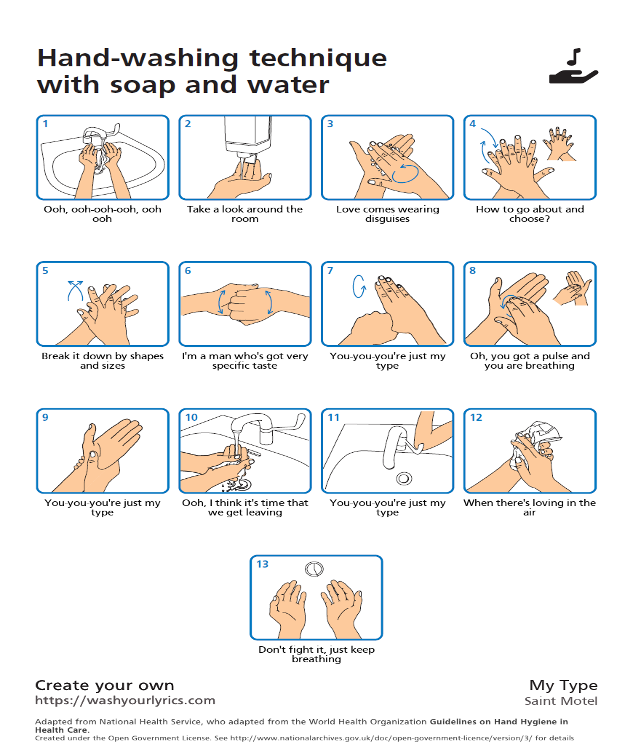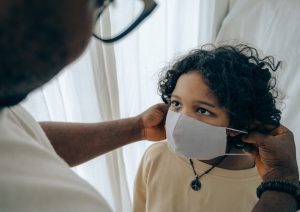Client Education
Client education is essential for maintaining a safe and infection-free environment. Avoid assuming that clients already know about health and safety. Client education should be incorporated into your care and become part of your regular practice as a healthcare provider. It can include teaching about the importance of vaccinations, role-modelling proper hand hygiene techniques, encouraging respiratory etiquette, reinforcing cleaning techniques, and discussing common sites of transmission. Incorporating infection prevention and control education into your daily practice improves compliance, encourages open dialogue, and supports optimal infection prevention and control outcomes.
Teaching strategies should be specific to your client and their learning needs. Strategies that are effective with adults may not have the same impact with children. It is important to understand the fundamentals of infection prevention and control practices so you can adapt your teaching style accordingly.
Hand hygiene is the most effective infection prevention and control strategy to stop the spread of infection. When teaching children, you can teach them how to wash their hands using a story or a fun song. With adolescents, you can use health-related modifications of their current favorite song. The Wash Your Lyrics app will add your favorite song to washing your hands either with soap and water or an alcohol-based hand gel.

Respiratory etiquette is another important infection prevention and control skill to teach clients. Respiratory etiquette includes:
- Practicing coughing or sneezing into the upper arm or the bend of your elbow and not into the hands.
- If coughing or sneezing into a tissue, disposing of the tissue into the garbage after use and performing hand hygiene.
- Avoiding talking, sneezing, or coughing over open wounds and sterile dressings.
- Wearing a mask if coughing or sneezing.
- Following hospital policies related to creating a healthy environment.

Additional steps that should be followed by the client’s visitors, as well as all healthcare providers include:
- Wearing a mask if suffering from a respiratory illness, and considering staying home.
- Not going to the healthcare setting or work ill or with symptoms of a communicable disease (influenza or cold) that puts clients or others at risk.
- Following hospital policies related to creating a healthy workplace.

Part of client education is to teach the client’s care partners and visitors about the importance of following infection prevention and control protocols. You can use the same teaching strategies as the client. For example, if the client has children visiting you can use colouring resources about how to wash your hands. For other visitors, you can show them how to perform hand hygiene effectively by demonstrating the technique.
If the client is in isolation, then visitors should go to the nursing station first, to ensure they understand the additional precaution requirements. Everyone has an important role to maintain infection prevention and control measures: the healthcare team, clients, and their visitors. Healthcare providers need to educate clients and their visitors about the required additional isolation precaution measures. The client’s door should display the appropriate sign indicating to clients and visitors what isolation precautions are required before entering the room. The client’s nurse will explain the additional precaution sign on the door, show them where the PPE is located, and how to properly put on and take off PPE to avoid transmission. Shared toys or games must be cleaned and disinfected prior to and after the client plays with it. Follow healthcare policies regarding what toys and games (e.g., gaming consoles, board games) are allowed inside isolation rooms and how to properly clean items prior to and after use.
Depending on your role, you can make sure the visitors are wearing the proper PPE. For example, ensuring their mask remains on and is properly covering their nose and is under their chin the entire time they are visiting the client.
Digital Story with Logan Tullett
Common Questions about Infection Prevention and Control Practices
Attribution
This page was remixed with our own original content and adapted from:
Clinical Procedures for Safer Patient Care — Thompson Rivers University Edition by Renée Anderson, Glynda Rees Doyle, and Jodie Anita McCutcheon is used under a CC BY 4.0 Licence. This book is an adaptation of Clinical Procedures of Safer Patient Care by Glynda Rees Doyle and Jodie Anita McCutcheon, which is under a CC BY 4.0 Licence. A full list of changes and additions made by Renée Anderson can be found in the About the Book section.

